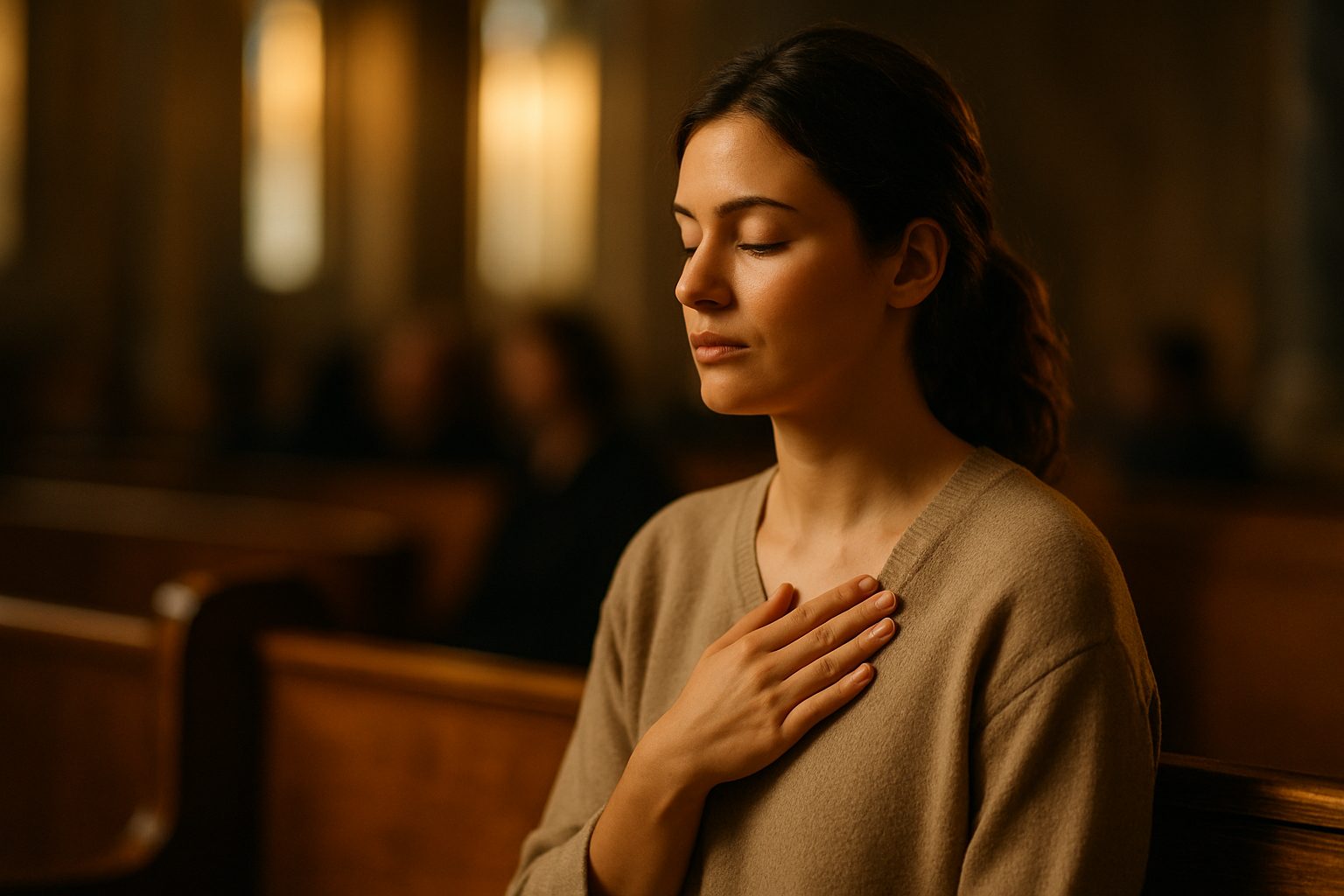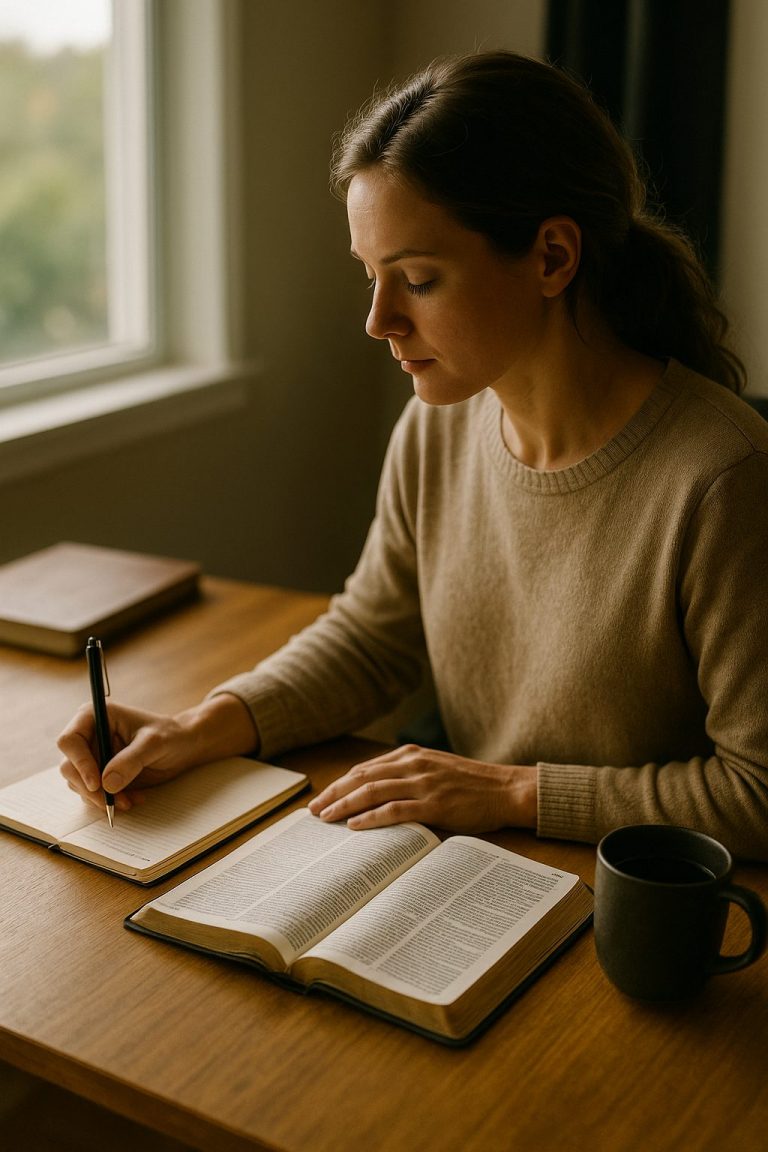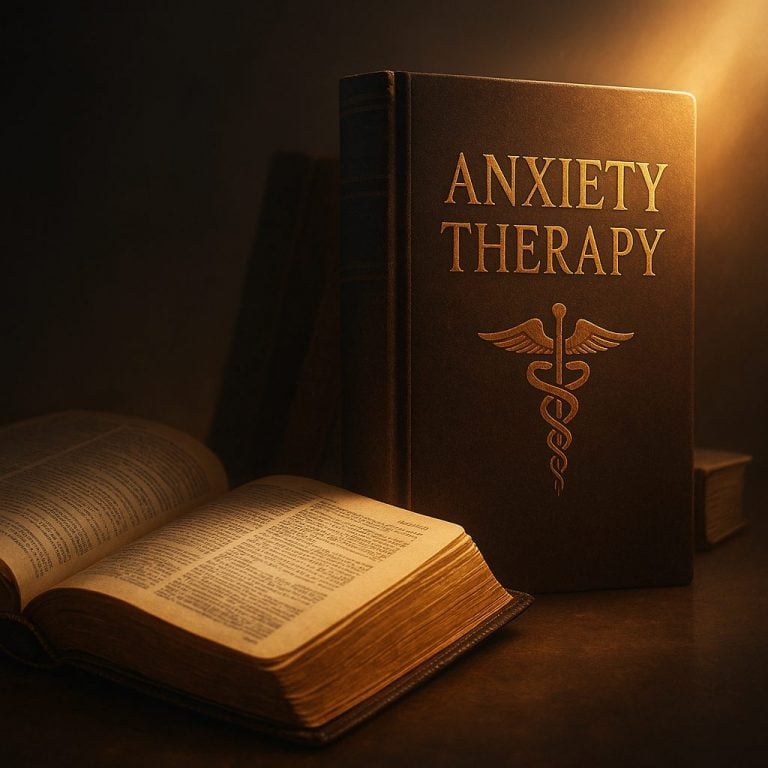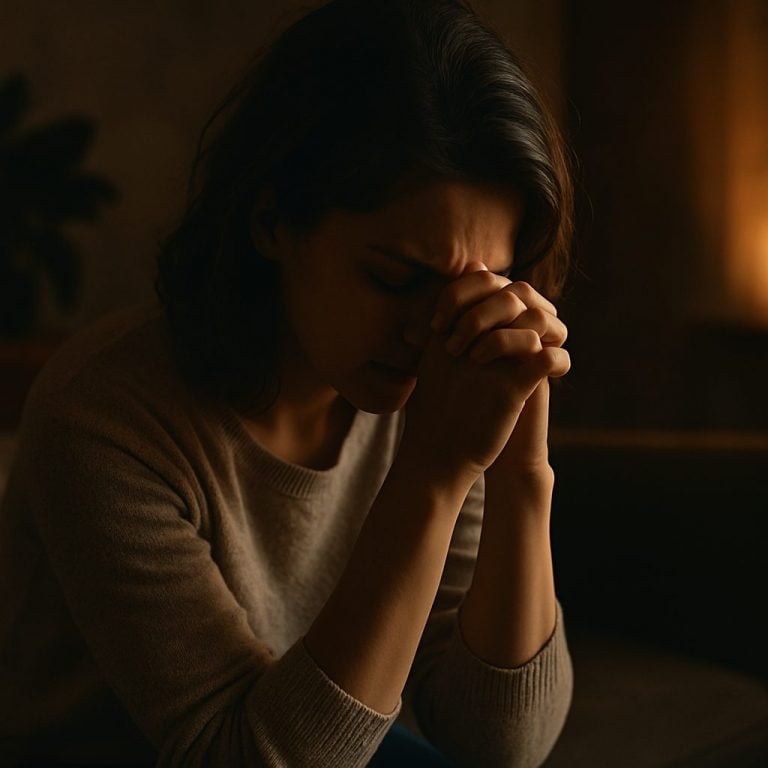Grounding Techniques For Anxiety You Can Do In Public
Estimated reading time: 8 minutes
Introduction
Anxiety can hit hard in crowded rooms, church lobbies, airplanes, classrooms, and checkout lines. Because your nervous system fires the fight‑or‑flight alarm, you may feel shaky, short of breath, and certain you will embarrass yourself. Yet you are not powerless. With simple, repeatable skills and a steady trust in God’s care, you can settle your body and re‑enter the moment. This guide collects grounding techniques for anxiety you can do in public and sets them in plain language so you can act quickly without drawing attention. You will find short prayers, science‑backed explanations, and quick examples you can try today.
Because these skills work best when practiced, you will also see easy ways to rehearse them at home. Then, when anxiety rises during a work meeting or after Sunday service, you will already know what to do. Moreover, links throughout point to helpful research and step‑by‑step tools, including a psychiatrist‑reviewed overview of grounding (Talkiatry) and a practical description of the five‑senses method (University of Rochester Medical Center). For a Christian lens on these tools, you can reflect with these Bible verses for anxiety as you practice.
How Grounding Calms A Stressed Nervous System
Why do public moments feel so intense? First, the body can misread social risk as physical danger. Consequently, your heart rate climbs, your breathing shortens, and your muscles tense. However, the same God‑designed biology that speeds you up can also slow you down. When you shift attention to breath, touch, sight, sound, and Scripture, the parasympathetic system engages and your brain receives a “safety” signal. As a result, adrenaline begins to fall and your thinking clears. In practice, public grounding exercises redirect attention outward and upward, which interrupts catastrophic loops and restores perspective.
Because breathing changes body chemistry quickly, it is an ideal starter skill. Research highlights that slow, deliberate breathing stimulates the vagus nerve and supports a “rest and digest” state (American Heart Association). In fact, structured patterns such as “cyclic sighing” have shown measurable anxiety benefits in lab studies (Stanford Medicine). To integrate faith as you breathe, you can pair the inhale and exhale with a one‑line prayer drawn from Philippians 4:6–7; this approach aligns with our prayer for anxiety guide and helps you stay present with God while your body settles.
Discreet Grounding Techniques For Anxiety You Can Do In Public
Start with discreet options that look like nothing to onlookers. First, try “box” breathing. Inhale through your nose for four counts, hold four, exhale through your mouth for four, and hold four. Because slow breathing sends a calming signal, your pulse can ease within minutes; pair the exhale with the prayer, “Lord, I give You my fear.” Next, run the 5‑4‑3‑2‑1 senses scan. Quietly notice five things you can see, four you can feel, three you can hear, two you can smell, and one you can taste—an effective, evidence‑supported method for staying grounded in the present (URMC). Additionally, you can place one hand on the chair or table, feel your feet on the floor, and soften your jaw; these micro‑movements cue safety.
Then add gentle touch and tension‑release. Press your feet into the ground, roll a smooth pocket stone between your fingers, or tense a muscle group for five seconds and release with a long exhale. Because short truth statements help reshape attention, quietly repeat, “God is with me; I can proceed.” While you practice these grounding techniques for anxiety you can do in public, keep your posture open, breathe through your nose, and speak kindly to yourself. For deeper step‑by‑step breathing help, bookmark our deep breathing exercises and our panic attack guide so you can rehearse at home and recall the sequence when it matters.
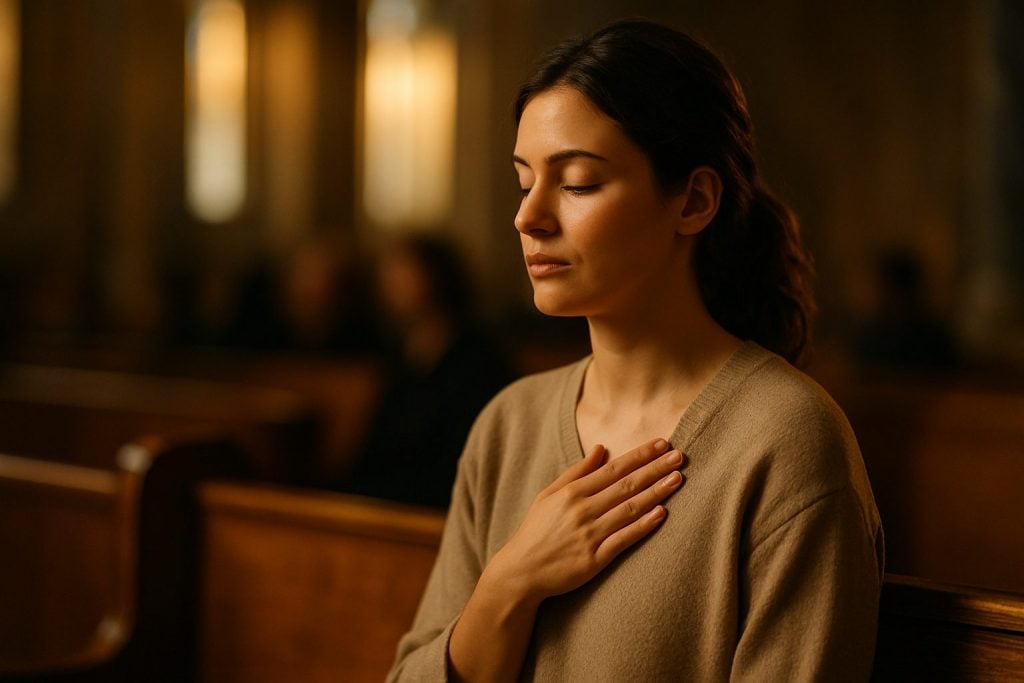
Low‑Profile Options When Discreet Isn’t Enough
Sometimes you need a brief timeout. Therefore, excuse yourself to the restroom or step outside for air. Splash cool water on your face or wrists to trigger a calming reflex; short cold exposure can slow heart rate and dampen the stress response (Cedars‑Sinai). Alternatively, sip a warm tea for comfort. Because adrenaline primes the body to move, a quick walk down the hall often reduces jittery energy and clears your head. If you cannot leave, try isometric work: press your palms together, push your heels into the floor, or grip the chair for ten breaths.
Meanwhile, send a short text to a trusted friend or whisper a thirty‑second prayer. In addition, if your clinician has provided a fast‑acting aid for rare panic moments, use it exactly as directed. Exercise also steadies the system; remarkably, even a 10‑minute brisk walk can reduce anxiety for hours (Anxiety & Depression Association of America). Because social settings can be unpredictable, consider printing a one‑page “helps” card from our panic attack relief guide to carry in your wallet as a reminder.
Real‑World Case Study And Quick Tracker
Case study. Jane, 34, often felt trapped before church. She rated her anxiety nine out of ten and left early most weeks. After four weeks of practice she used box breathing as she sat, ran a five‑senses scan, and repeated Isaiah 41:10. Next, she greeted one person to shift attention outward. Consequently, her peak anxiety dropped to four or five, and she remained through the service. Moreover, panic episodes fell from three per week to one or none. The combination of prayer, public grounding exercises, and physical movement built confidence.
Similarly, you can track your own progress. Before a public event, jot a baseline from 0–10. Then note which tool you used and your after rating. Over time, your notes will reveal which grounding exercises in public work fastest for you. To pair practice with Scripture, save these anxiety biblical guidance passages and these simple Christian meditation ideas. Because growth takes repetition, small wins matter; celebrate each step and thank God for His steady presence.
Faith, Medicine, And Wise Counsel Work Together
Faith, medicine, and wise counsel cooperate. Because prayer brings your worries to God, combine slow breath with a one‑line prayer from Philippians 4:6–7. Furthermore, evidence‑based counseling such as cognitive behavioral therapy helps you challenge catastrophic thoughts and face feared situations gradually; for outcome data, see this clinical summary (APA Division 12). When symptoms remain severe, short‑ or long‑term medication may reduce intensity so you can use skills with a clearer head.
Therefore, do not hesitate to ask your physician and counselor how to combine care with spiritual practices. A balanced Christian perspective affirms that appropriate anti‑anxiety medication can be morally acceptable and helpful when used wisely (Biblical Counseling Center). Finally, schedule rest, move most days, and limit excessive caffeine so your baseline feels calmer. As your body steadies, you will find it easier to practice grounding techniques for anxiety you can do in public during real‑world stressors.
Amazon Product Recommendations For Discreet Public Grounding
Tools are optional, yet they can make grounding easier in public places. Choose a smooth worry stone or pocket cross to rub between your fingers during conversations (worry stones or a pocket cross). Consider a silent spinner ring that provides tactile feedback without noise (spinner rings). Noise‑cancelling earbuds help in loud lobbies or airplanes; keep one ear open for conversation and safety (noise‑cancelling earbuds).
A personal essential‑oil inhaler can cue a slow exhale with a familiar scent (essential‑oil inhalers). Moreover, carrying chamomile tea bags lets you ask for hot water almost anywhere and sip warmth while you breathe (chamomile tea). Finally, a compact instant cold pack in your bag can deliver a quick cool‑down if you feel a sudden surge (instant cold packs). As you evaluate items, remember that grounding techniques for anxiety you can do in public work because you use them consistently; the device simply assists your attention and breath.
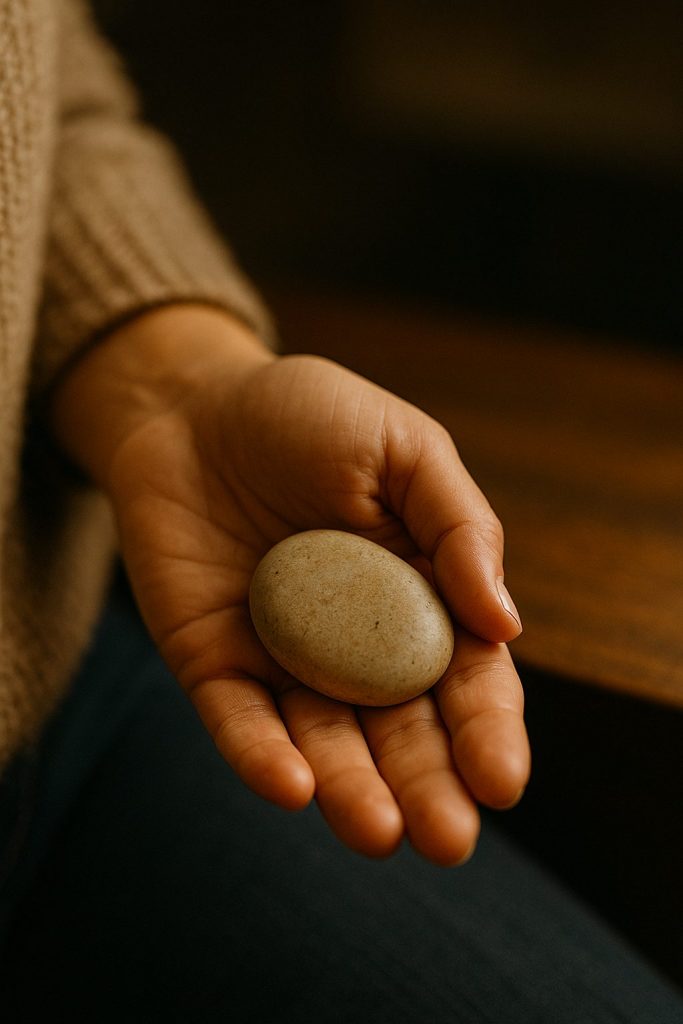
Conclusion: Practice, Prepare, And Walk In Peace
Practice turns calm into a habit. Therefore, rehearse one breathing pattern and one five‑senses exercise daily for a week. Next, add gentle touch and a short truth statement. When anxiety rises in a public place, you will already know what to do. Because peace grows through repetition, keep a small log, celebrate each win, and thank God for every step forward. If you want a simple devotional to pair with practice, review these faith and science helps for social anxiety and our quick biblical tools for overthinking.
As you keep using these grounding techniques for anxiety you can do in public, you will notice a steady shift: your body settles faster, your thoughts feel kinder, and your confidence rises. In time, church foyers, offices, and crowded lines will feel less threatening and more like places where your attention, presence, and compassion can shine. With practice, you can carry a reliable, Christ‑centered set of skills into any space.

